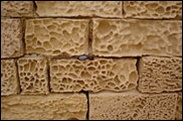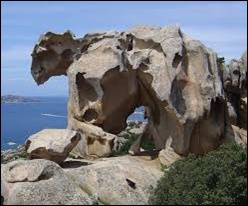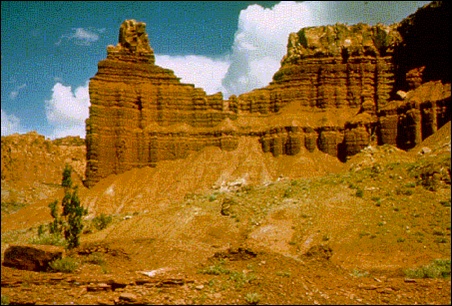- Weathering is the breaking down of minerals, rocks and earth’s features. Weathering takes place with no movement and thus should not be confused with Erosion which involves the movement of minerals, rocks and earth’s features caused by the natural agencies e.g. wind, glacier, gravity, water: rain, river, stream, lake, sea / ocean, etc
- There are two types of major Weathering Processes:
(1)Physical Weathering and (2) Chemical Weathering.
- Chemical Weathering is mostly associated with or involves the Biological Processing
- Physical Weathering (also known as Mechanical Weathering) involves the breakdown of minerals, rocks and earth’s features through the direct contact with atmospheric agencies such as heat, cold, frost, pressure, loading, etc. The second classification, Chemical Weathering involves the direct effect of atmospheric chemicals or biologically produced chemicals i.e. biological compounds (also known as Biological Weathering) in the breakdown of minerals, rocks and earth’s featuresWeathering is the breaking down of minerals, rocks and earth’s features. Weathering takes place with no movement and thus should not be confused with Erosion which involves the movement of minerals, rocks and earth’s features caused by the natural agencies e.g. wind, glacier, gravity, water: rain, river, stream, lake, sea / ocean, etc




- The materials left over after the rock breaks down combined with organic material creates soil. Earth's landforms and landscapes are the result of weathering processes combined with erosion and re-deposition
- Present landscape of almost all the places on the earth has been formed by the weathering of the original rocks. Re-structuring or removal of the part of the original rocks is carried out by the natural agencies e.g. wind, glacier, gravity, water: rain, river, stream, lake, sea / ocean, etc by transporting the material either weathered from the original rocks and filled into different rocks or removed from the original rocks and carried away somewhere else
- Geological study of the Landscape of the earth surface is called Geomorphology
-
- Definition of Soil: Soil is defined as detrital mixture of silicates of Al, Ca, Mg and Fe together with the other metallic silicates and oxides, free silica usually in form of quartz, humus (:organic matter of plant and animal lives whether live or dead) and other inorganic and organic substances
- The top-soils, outcrops and vegetation indicate that what lies beneath them in the earth. The types of plants and trees which grow in and near to the fault-lines are different from those growing on the solid rocks. This helps to identify the fault-lines while viewing them aerially or travelling by a bus or train
- As we know that earth was formed about 4.5 billion years ago – the landscape and surface features of the earth that time were not same or similar to those of the present age
- Present landscape and surface features of the earth are the result of weathering & erosion and geological evolution
-
- (1) Physical Weathering: It causes the disintegration of rocks without any chemical change. The primary process in physical weathering is abrasion. Physical weathering occur due to temperature, pressure, frost etc. However, chemical and physical weathering usually go side by side. For example, cracks developed by physical weathering increase the surface area for the chemical action
- Furthermore, the chemical action of the minerals in cracks helps the physical disintegration process. Physical Weathering is also called Mechanical Weathering
- Important Factors included in Physical Weathering:
(i) Thermal Weathering (caused by expansion and contraction of the rocks due to temperature changes)
(ii) Frost Weathering
(iii) Pressure Increase & Release (due to the deposition and removal of overlying rocks by the process of sedimentation and erosion)
(iv) Hydraulic Action (powerful rushing of the water into the cracks)
(v) Salt-Crystal Effects (caused by the saline solution to seep into the cracks, finally causing the formation and expansion of crystals into the cracks and hence widening the cracks)
(vi) Biological Effects on Physical Weathering (Lichens, mosses and seedlings create the chemical environment for chemical actions as well as exert the pressure to expand the cracks -
(2) Chemical Weathering: Chemical weathering changes the chemical composition of the rocks
- Presence of water or moisture is compulsory for causing the chemical weathering. Tectonic Uplift is important for the buried rocks to get exposed to the atmosphere carrying water or moisture
- Acidification, Hydrolysis and Oxidation are the Three Important Factors
- Acidification and Dissolution: Rain water dissolves SO2 and forms a very strong acid – pH: 3.0 (sulfur comes from volcanic eruption)
- Carbonation and Dissolution: Rain water dissolves CO2 and forms a weak acid: Carbonic Acid: H2CO3 – pH: 4.5. It reacts with the CaCO3 of limestone and forms Calcium Bicarbonate: Ca(HCO3)2 – pH: 6.35.
- Cold water effectively dissolves and holds more CO2, so significant weathering of glacial limestone occurs – weathering due to carbonation causes the widening and deepening of rock-joints



